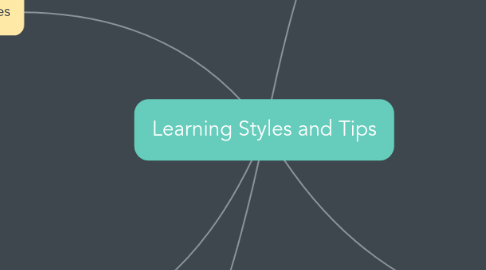
1. Multiple Intelligences
1.1. Verbal/Linguistic
1.1.1. Likes to read, write, and tell stories and is good at memorizing information
1.2. Logical/Mathematical
1.2.1. Likes to work with numbers and is good at problem-solving and logical processes
1.3. Visual/Spatial
1.3.1. Likes to draw and play with machines and is good at puzzles and reading maps and charts
1.4. Bodily/Kinesthetic
1.4.1. Likes to move around and is good at sports, dance, and acting
1.5. Musical/Rhythmic
1.5.1. Likes to sing and play an instrument and is good at remembering melodies and noticing pitches and rhythms
1.6. Interpersonal
1.6.1. Likes to have many friends and is good at understanding people, leading others, and mediating conflicts
1.7. Intrapersonal
1.7.1. Likes to work alone, understands himself or herself well, and is an original thinker
1.8. Naturalistic
1.8.1. Likes to be outside and is good at preservation, conservation, and organizing a living area
2. Learning Dissabilities
2.1. Attention Disorders
2.1.1. ADD/ADHD
2.1.1.1. Have trouble organizing tasks or completing their work. They don’t seem to listen to or follow directions, and their work might be messy or appear careless.
2.1.2. Cognitive learning disabilities
2.1.2.1. Dyslexia
2.1.2.1.1. Have difficulty assigning the right sounds to letters, either individually or when letters combine to form words.
2.2. Tip: If you have a documented learning disability, make sure to notify the office of disabled students services at your school to receive reasonable accommodations as required by law. Reasonable accommodations might include use of a computer during some exams, readers for tests, in-class note-takers, extra time for assignments and tests, and use of audio text- books, depending on need and the type of disability.
3. Learn to Adapt
3.1. In college you will find that some instructors may have teaching styles that are challenging for you. Seek out the kinds of classes that conform to the way you like to learn, but also develop your adaptive strategies to make the most of any classroom setting.
3.1.1. Take control of your learning process and develop some strategies to learn the material the way you prefer.
4. MBTI
4.1. Extravert
4.1.1. Directing energy and attention to outer world of people, events and things
4.1.2. Create note cards, study outlines and study groups
4.2. Introvert
4.2.1. Directing energy and attention to the inner world of thoughts, feelings, and reflections
4.2.2. Before you take any action, carefully review everything you have encountered
4.3. Sensing Type
4.3.1. Perceiving the world and taking in information directly, through your five senses
4.3.2. Use sensing to find and learn the facts
4.4. Intuitive Type
4.4.1. Perceiving the world and taking in information indirectly, by using your intuition
4.4.2. Use intuition to consider what those facts mean
4.5. Thinking Type
4.5.1. Making decisions through logical, rational analysis
4.5.2. Use thinking to analyze pros and cons of what is being presented
4.6. Feeling Type
4.6.1. Approaching the outside world by making decisions and judgments
4.6.2. Make informed value judgments
4.7. Judging Type
4.7.1. Organize and plan
4.7.2. Making your decisions through your personal values, likes, and dislikes
4.8. Perceiving Type
4.8.1. Approaching the outside world by observing and perceiving
4.8.2. Change your plan as needed
5. VARK
5.1. Visual Learners
5.1.1. Prefer: Information, charts, graphs, symbols
5.1.2. Underline and highlight notes
5.1.2.1. Use symbols, charts and graphs
5.2. Aurel Learners
5.2.1. Prefer: Hear info
5.2.2. Talk with others to make sure lecture notes are accurate
5.2.2.1. Record lecutures or record yourself reading your notes
5.3. Read/Write Learners
5.3.1. Prefer: Info displayed as words
5.3.2. Write and rewrite notes
5.3.2.1. Read notes silently
5.4. Kinesthetic Learners
5.4.1. Prefer: Experience and practice
5.4.2. Use all senses in learning
5.4.2.1. Add real world examples to notes

